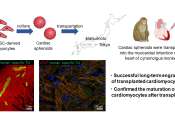Wellness and diet coaching app features state-of-the-art food and fitness tracking, support and education
Cleveland Clinic and app developer FitNow, Inc. have launched the Cleveland Clinic Diet app, which offers health and diet advice built upon evidence-based nutrition science and clinical success, paired with a comprehensive ...
Jun 27, 2024
0
1









